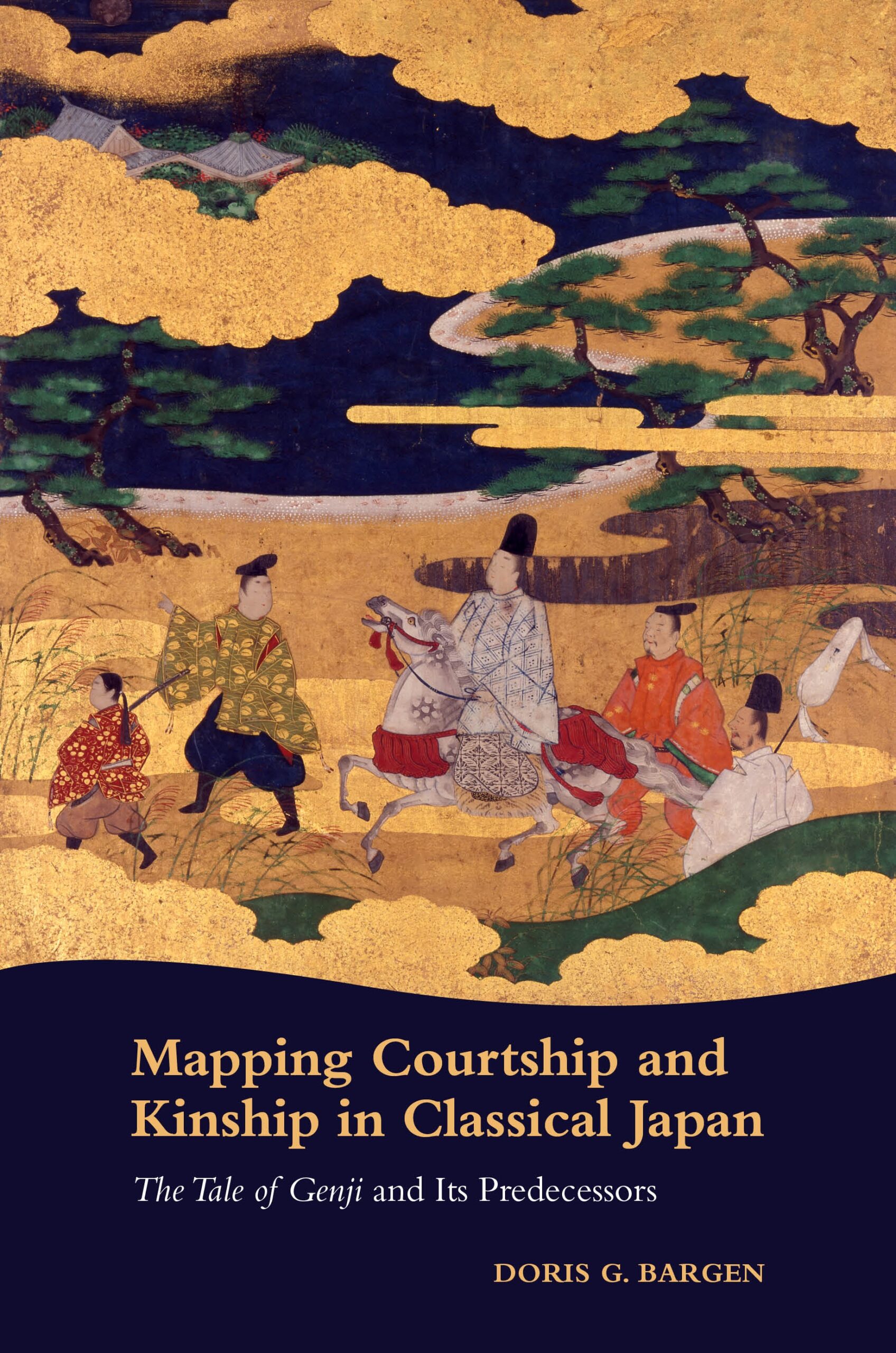Mapping Courtship and Kinship in Classical Japan: The Tale of Genji and Its Predecessors
Additional Information
- About the Book
-
Literary critiques of Murasaki Shikibu’s eleventh-century The Tale of Genji have often focused on the amorous adventures of its eponymous hero. In this paradigm-shifting analysis of the Genji and other mid-Heian literature, Doris G. Bargen emphasizes the thematic importance of Japan’s complex polygynous kinship system as the domain within which courtship occurs. Heian courtship, conducted mainly to form secondary marriages, was driven by power struggles of succession among lineages that focused on achieving the highest position possible at court. Thus interpreting courtship in light of genealogies is essential for comprehending the politics of interpersonal behavior in many of these texts. Bargen focuses on the genealogical maze—the literal and figurative space through which several generations of men and women in the Genji moved. She demonstrates that courtship politics sought to control kinship by strengthening genealogical lines, while secret affairs and illicit offspring produced genealogical uncertainty that could be dealt with only by reconnecting dissociated lineages or ignoring or even terminating them.
The work examines in detail the literary construction of a courtship practice known as kaimami, or “looking through a gap in the fence,” in pre-Genji tales and diaries, and Sei Shōnagon’s famous Pillow Book. In Murasaki Shikibu’s Genji, courtship takes on multigenerational complexity and is often used as a political strategy to vindicate injustices, counteract sexual transgressions, or resist the pressure of imperial succession. Bargen argues persuasively that a woman observed by a man was not wholly deprived of agency: She could choose how much to reveal or conceal as she peeked through shutters, from behind partitions, fans, and kimono sleeves, or through narrow carriage windows. That mid-Heian authors showed courtship in its innumerable forms as being influenced by the spatial considerations of the Heian capital and its environs and by the architectural details of the residences within which aristocratic women were sequestered adds a fascinating topographical dimension to courtship. In Mapping Courtship and Kinship in Classical Japan readers both familiar with and new to The Tale of Genji and its predecessors will be introduced to a wholly new interpretive lens through which to view these classic texts. In addition, the book includes charts that trace Genji characters’ lineages, maps and diagrams that plot the movements of courtiers as they make their way through the capital and beyond, and color reproductions of paintings that capture the drama of courtship.
- About the Author(s)
-
Doris G. Bargen, Author
Doris G. Bargen is professor of Japanese studies at the University of Massachusetts Amherst.
- Reviews and Endorsements
-
- This meticulously researched work succeeds brilliantly in mapping the tight web of kinship that dominated Heian aristocratic society. . . . Bargen’s interpretive thrust is primarily psychological, but she is careful to ground her analysis in close textual reading. Joining other interpretive work—in both Japanese and English—on the Tale of Genji, this thought-provoking book raises many interesting issues. Generously illustrated and written with verve, it will engage not only students of Japanese literature but also those in history, anthropology, and comparative psychology.
—Choice - One strength of the book is its acknowledgement of alternative interpretations that allow readers to arrive at their own conclusions about the degree to which genealogical strategies played a role in the actions of characters whose occasionally conflicting desires are as tantalizingly obscure to themselves and others as the partial glimpses provided by kaimami. . . . In bringing such new readings and materials to English-language scholarship on the Genji, this book is a welcome addition to the field.
—Pacific Historical Review - This is an ambitious book . . . The well-executed maps, diagrams, and illustrations are helpful to our understanding of characters’ movements and locations in the various Heian texts examined.
—Monumenta Nipponica - Bargen’s Mapping Courtship and Kinship in Classical Japan is a very fine book. . . . Bargen is at her best when she is ruminating on the psychological complexities and mixed motivations of individual characters in the Tale. . . . Bargen is to be commended for her second great contribution to English language studies of the Tale.
—H-Asia
- This meticulously researched work succeeds brilliantly in mapping the tight web of kinship that dominated Heian aristocratic society. . . . Bargen’s interpretive thrust is primarily psychological, but she is careful to ground her analysis in close textual reading. Joining other interpretive work—in both Japanese and English—on the Tale of Genji, this thought-provoking book raises many interesting issues. Generously illustrated and written with verve, it will engage not only students of Japanese literature but also those in history, anthropology, and comparative psychology.
- Supporting Resources
-





